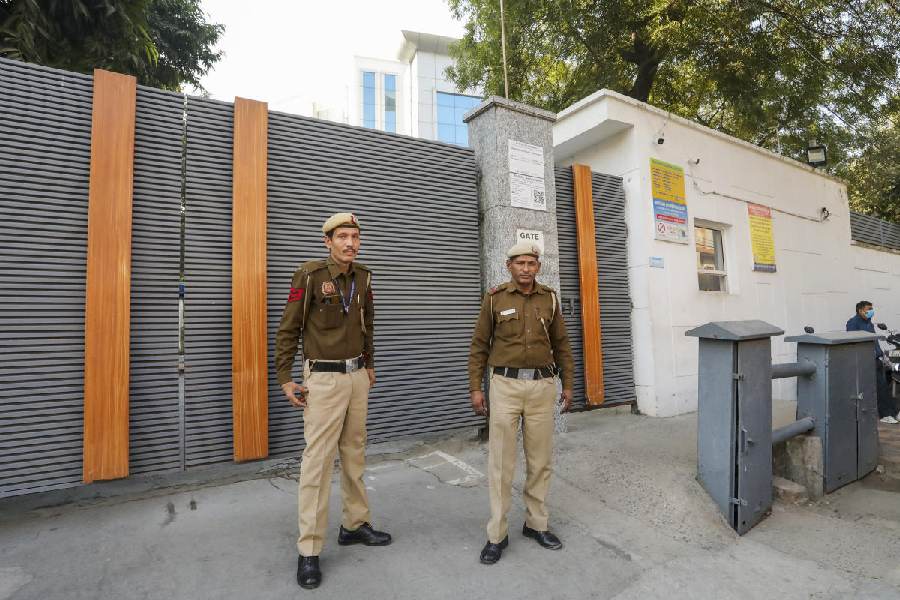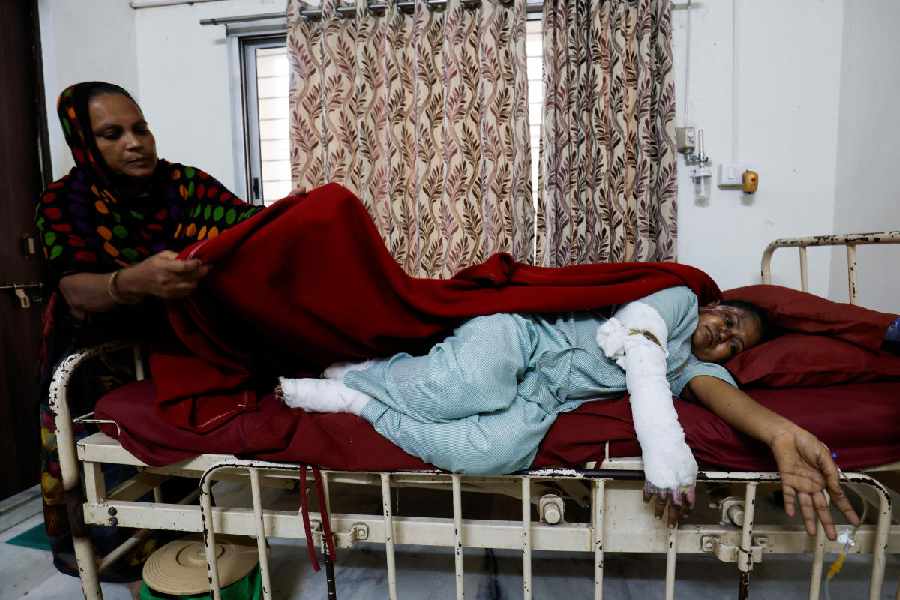 |
Jayanti, a 14-year-old sex worker, lay in a pool of blood along a highway in a north Indian state. Her autopsy revealed that her death was due to multiple head and neck injuries inflicted with a sharp object. Jayanti had last been spotted alive four days ago with a 30-year old army sergeant, the prime suspect.
Investigators were working overtime to put an exact time to the death so as to nab the influential sergeant. In doing so, they looked at all the circumstantial evidence — the physical appearance of the body and the decomposition of the organs. But nothing seemed to help.
One of the smarter sleuths had collected some adult maggot flies and larvae that were hovering around the body at the crime scene. He then placed some of the larva in small containers and reared them into adult flies. Next, he rushed to the nearby meteorology office and obtained some seemingly unrelated information — the maximum and minimum temperatures at the crime scene, the rainfall, cloud cover, wind speed and direction and the relative humidity. Based on this evidence, he inferred that the first insects to colonise the body had arrived exactly four days ago. That evidence clinched the case and led to the arrest of the sergeant, who later admitted having committed the crime by striking Jayanti (her name and the place where the murder occurred have been changed) repeatedly with a small hatchet.
Maggots and their myriad insect cousins are increasingly coming to the aid of crime scene technicians, homicide investigators, coroners, medical examiners and others involved in the death investigation process. And the 21st century’s latest cutting edge science discipline — forensic entomology — is slowly emerging as the ‘last word’ in criminal and medico-legal investigations.
Cut to a small farm in rural south-central Indiana in the US. The remains of a murder victim had been thrown into an open well on the farm. The exact location of the well was unknown but as the investigators drove into one of the several farm yard sites, something remarkable struck them. Several thousand flies were hovering over a pile of old tyres. They dug up the debris of junk, tyres and rocks and found the decomposed body at the bottom of the well. There were no insects on the body as it was buried deep. But the odour had attracted blow flies, a common variety of flies associated with dead animals. The larvae (maggots) of these flies feed on dead animal tissue. The appearance of the flies or maggots typically indicates that an animal has died in the vicinity. Blow flies are attracted to recently deceased animals, where they lay eggs.
 |
| Clinching evidence: Forensic entomologists pick up all insect clues from the site of crime |
Legal-aid larvae
Says Dr Devinder Singh, India’s lone practising forensic entomologist, “Hundreds of cases in developed countries are today being solved with insect evidence. Entomologists are not only appearing in court to offer testimony as expert witnesses but are also being hired by prosecutors and defenders just like lawyers are.” Singh, an entomologist at the Punjabi University in Patiala, is currently working on a Department of Science and Technology project to create base-line data on carrion insects (those that thrive on dead and putrefying flesh) which can be used as evidence in the Punjab region. “Insects have an acute power of smell and they are the earliest to find a dead body, long before the police can,” he says.
The most current worldwide directory of forensic entomologists lists a total of 62 scientists in this field of study. Of these, 33 specialise in medico-legal investigations. Most are affiliated to colleges or universities and teach entomology or biology. Two Indian researchers — Singh and Pankaj Kulsreshtha of the Medico Legal Institute, Bhopal, — have done seminal work in the area. Kulshreshtha specialises in pin-pointing the time of death during post-mortem using flies as his tools. For this purpose he utilises flies of specific classes — Calliphoridae, Sarcophagidae and Muscidae — which generally infest human corpses.
In the West, forensic entomology is finding diverse applications, including the detection of abuse in children and neglect of the elderly. It has helped solve cases of parents intentionally using wasps and bees to sting their children as a form of punishment. Entomological evidence has also been used to prove that the wounds of the elderly in both private and institutional care have been neglected.
That’s not all. Stings or the mere presence of bees and wasps have been proven to be responsible for a large number of single occupant car accidents that seem to lack a definitive cause. Insects have been suspected of causing aircraft crashes by their having obstructed access to essential instrumentation, and even implicated in the obstruction of fuel lines, causing engine failure. In some cases, forensic entomologists have examined the fragmented remains of insects found on the windshields and radiators of automobiles to find the probable path of an automobile. This assumes importance when pinpointing the location and areas of travel are crucial in a criminal investigation.
“Cockroaches simply walking through pooled and splattered blood produce tracks that may not be readily recognisable to the untrained observer but provide vital clues,” Singh says. Similarly, flies feeding on the blood and then passing the partially digested blood in its faeces (flyspecks) could provide very important evidence.
Indeed, stories of how insects have helped solve cases are legion. A US-based snack food company’s plants processed dried fruits, nuts and grains. Raw materials were received from several different suppliers, processed and packaged into the finished product within three to five days, stored for up to three months and shipped to customers. One day, a Florida customer returned the snacks saying he could see “worms” in it through the transparent cellophane packaging. The company was flooded with similar phone calls thereafter.
Forensic investigators visited the plants and collected samples of the snacks that had been returned by custyomers as well as fresh ones. They discovered that the products returned originated from the same lot number, dating back three and a half months. During a tour of the facilities, they also observe adult moths sticking here and there.
Indian meal moth larvae (caterpillars) colonise dried foodstuff at a certain humidity and moisture level. A thorough investigation of the temperature, humidity and moisture levels revealed that the moth could not have colonised the factory.
This left one possibility — the moths were introduced in the raw materials by one of the suppliers. The company and its insurer received a claims settlement exceeding $250,000 and compensation for business interruption coverage.
In murder cases, what information can a forensic entomologist provide at the death scene? Insect sleuths are most commonly called upon to determine the “time since death” in homicide investigations. The forensic entomologist uses a number of different techniques, including species succession, larval weight, larval length and a more technical method known as the accumulated degree hour technique which can be very precise if the necessary data are available. Inferences about possible postmortem movements of a corpse can also be made, says R Varatharajan of the School of Life Sciences of Manipur University, who has been researching insects in the state.
To cite one example, on an early spring day a young white man was found dead in a sandy, shrubby region in southwestern United States. He had died of multiple small caliber bullet wounds in the chest and back. A small amount of blood had oozed from the victim’s left nostril, partially coating his left eye. Forensic experts saw some granular mass on the left eye, collected it and and later identified it as a small mass of blow fly eggs.
These maggots were reared to adults. Based on the climatic conditions and knowledge of the developmental biology of this fly, the sleuths determined that the eggs most likely had been laid on the corpse 24 to 36 hours before the corpse was found. Investigation into the identity of the victim also revealed that he had last been seen with a male friend around 36 hours before his corpse was found. Putting two and two together, the investigators determined that the victim had been murdered by his companion approximately 36 hours before the discovery of the remains.
Some flies prefer specific environments for laying eggs — outdoor or indoor. Flies can also exhibit preferences for carcasses in the shade or in the sunlight. So if a corpse is recovered indoors with eggs of flies that typically inhabit sunny outdoor areas, someone clearly returned to the crime scene to move the body indoors to conceal it, he says.
Case histories from across the world have documented the immense utility of medico-criminal entomology. In Finland, blow flies were used as indicators for indoor as well as outdoor death scenes. In another recent case, the absence of insects in a seemingly straightforward death scene led to a killer’s confession. A window next to the victim was open when the body was found, thus giving the impression that the murderer had forced entry into the room the night before. However, the air conditioned room was cool even though it was very hot outdoors. In reality, the killer was known to the victim, had a key, and had returned to “set the stage” by opening the window just before feigning to have discovered the corpse. The insects thus had insufficient time to colonise the body because the window had been closed before the killer’s return. Confronted by this biological reality, the killer confessed.
 |
Critical clues
Says Alok Sen of the Entomology Research Institute at Loyola College in Chennai, “In a typical case study of drug trafficking, police established the country of origin of the drug through insects. When they seized the contraband material, cannabis, they noticed the presence of insects which in turn revealed the drug route as well as its point of origin.” Sen, who co-authored a paper on forensic entomology in the journal Current Science with Varatharajan, says not many laboratories in the country deal with the subject. “In the US and some European countries, it has assumed the shape of a continuous systematic and biological study. Forensic entomology should be introduced in the academic curriculum of Indian universities,” he says.
But, notes P K Sumodan, an entomologist who specialises in mosquitoes, “The discipline hasn’t yet taken off in India. Neither is it likely to do so in another decade.We do not have sufficient data on the taxonomy and biology of carrion feeding insects like blow flies. Being a big country with astoundingly diverse habitats, generating such data is unbelievably tough.” Sumodan feels that without the manpower or money needed for such in-depth taxonomic studies, forensic entomology is not a lucrative option for researchers in India right now.










